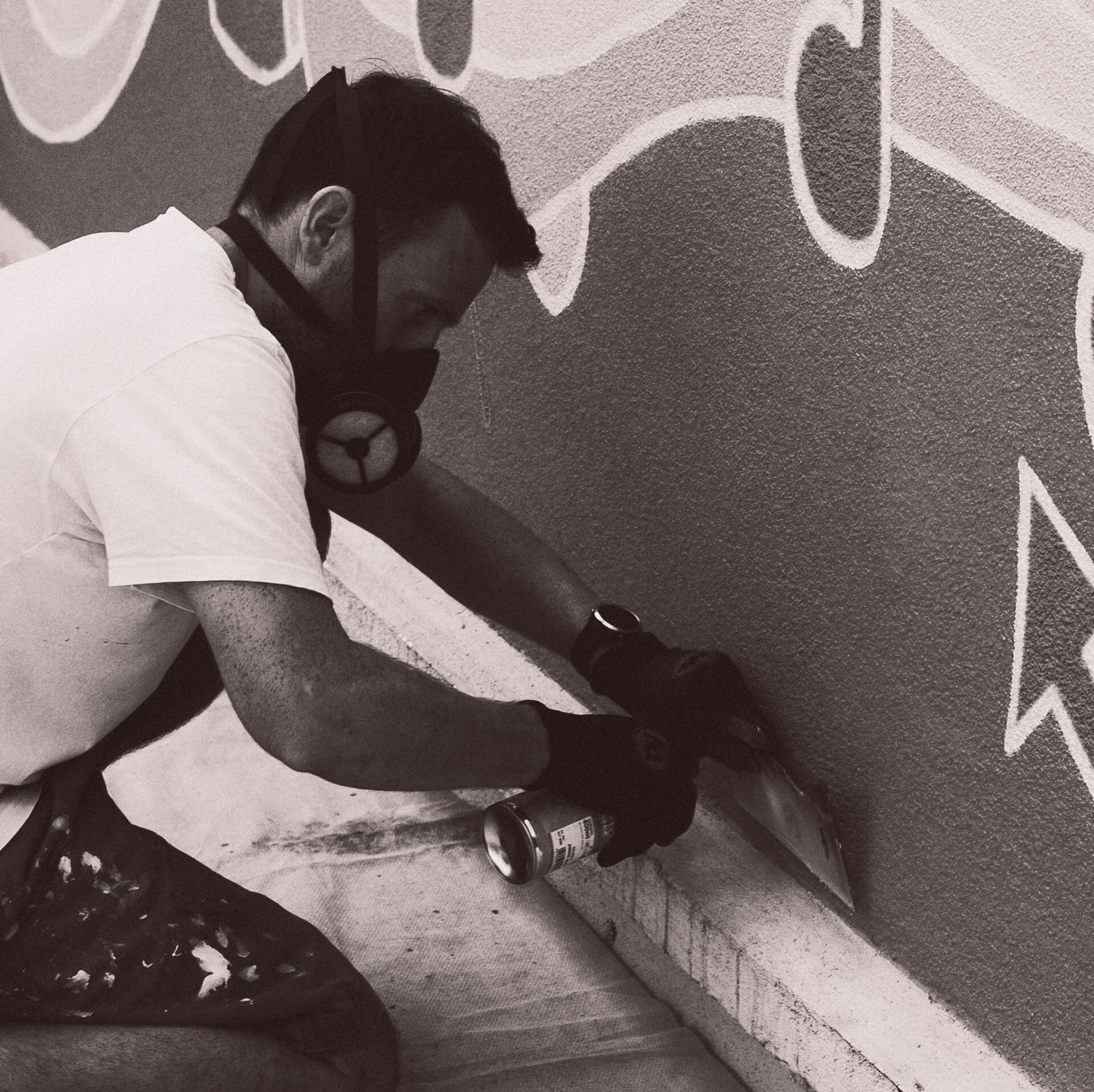Texting to 911 in San Diego
March 23, 2021
Texting 911 in San Diego
Can you text 911 in San Diego? Yes, but with an important caveat.
As of January 2021, San Diego has implemented texting to 911 throughout the county.
However, calling should still be the primary means of contacting 911. It's the most reliable, and will get the fastest response.
However, the ability to text 911 is valuable for:
- Situations where it is too dangerous to call or make noise.
This is emphasized in Safewest active shooter courses, as during a violent event in the workplace, one may need to contact 911 silently while hiding. Outside of work, the ability to discretely contact 911 can also be useful for victims of domestic violence. - Persons that are hearing or speech impaired.
- Situations is which cell phone signal is too poor to for a reliable voice call. Text messages use less bandwidth and may get through.
Texting to 911 has been active in most neighboring counties, including Orange County (since 2019), Los Angeles County (since 2018), Riverside County (since 2019), and San Bernardino County (since 2015). Residents of these counties, please verify this information with your local emergency response officials and check current capabilities.

When inspecting fire extinguishers, some people (including a troubling number of safety professionals and extinguisher training instructors) think that it is necessary to shake, tap, or invert the extinguisher contents to keep them properly mixed, or prevent them from solidifying. However, this is not only unnecessary but also potentially unsafe, and can damage the extinguisher. The myth of needing to shake or invert extinguishers is so common, Amerex, the world's largest manufacturer of fire extinguishers, has had to release a notice telling people NOT to do this because it can damage the extinguisher. Dry chemical extinguishers are essentially a pressurized cylinder containing a powder extinguishing agent, which is released when the extinguisher is activated. Modern extinguishers are designed and tested so that the extinguishing agent is distributed evenly and remains effective even when the extinguisher is stored for long periods. Shaking or inverting the extinguisher can damage the internal parts of the extinguisher, including the gauge and pressure valve. This can reduce the extinguisher’s effectiveness or even cause it to malfunction when needed. Extinguishers are also heavy, and difficult to grip when shaking or inverting. There is the risk that the person inspecting the extinguisher may accidentally drop it, injuring themselves or damaging the extinguisher. Avoid this safety "worst practice" and instead focus on the essentials of a good extinguisher inspection: Look for Physical Damage: Check the extinguisher body, valve, nozzle, and hose for any signs of damage or corrosion. Check the Pressure Gauge: If the extinguisher has a gauge, verify that the needle is in the green zone, indicating that the extinguisher is properly pressurized. Inspect the Pin and Seal: Verify that the safety pin and plastic seal are intact, ensuring the extinguisher hasn’t been used or tampered with. By following these steps, you ensure that the extinguisher remains in good working order without the risk of damaging it or injuring yourself by shaking, taping, or turning it upside down. Proper inspection, handling and storage are key to ensuring that a fire extinguisher is ready when you need it most.

Safewest uses a quantitative fit test (QNFT) method for all respirator types, as it’s the standard for objectively and accurately assessing respirator fit using specialized air measurement equipment. The alternative, a qualitative fit test (QLFT), relies on spraying a chemical at the user while they are wearing their respirator. If the user detects the chemical, the respirator has a leak. If they don't, the respirator is assumed to have an adequate seal. The amount of chemical sprayed and the sequence used is important, and this fit test method is often done incorrectly by inexperienced and insufficiently trained fit test providers. Qualitative fit testing (QLFT) is done by companies that cannot or do not want to make the investment in quantitative fit test (QNFT) equipment, which generally costs between $15,000 and $18,000 per machine. One problem with qualitative fit tests (QLFT) is that they are less accurate. For this reason, this method generally cannot be used for fit testing full face respirators; OSHA requires a quantitative fit test (QNFT) for these respirator types, unless their use is in a lower-contamination scenario where a half-face respirator would also have been appropriate. Another problem with qualitative fit testing (QLFT) is that the chemical sprayed at the respirator user can cause health problems. There are a few different chemicals used for this type of fit testing, and one of the most popular, and the most dangerous, is called "irritant smoke." This fit test method relies on spraying a hazardous chemical called hydrogen chloride towards the employee’s face while they are wearing the respirator; if this chemical irritates their eyes, nose, and lungs, this indicates the respirator is leaking. It’s a less accurate, dangerous, and error-prone method which NIOSH strongly recommends not ever be used. NIOSH is the Federal agency that conducts research on occupational safety and health. One of their purposes is to give scientific and technical advice to OSHA on regulations. In a published policy statement(1), they said the following: "NIOSH, in its formal comments to OSHA [on fit testing methods]..strongly recommended against the use of this fit test method because of the health risk associated with exposure to the irritant smoke [and] NIOSH continues to recommend against the use of irritant smoke fit testing for these same reasons . . . Air sampling has shown that ventilation smoke tubes can produce highly variable and unpredictable hydrogen chloride concentrations far exceeding 5 ppm." The reason 5 ppm is emphasized is because by law (under the exposure limits established by OSHA), that is the maximum airborne concentration of hydrogen chloride that an employee can be exposed to. In other words, this common qualitative fit testing method can, ironically, expose employees to unsafe concentrations of a dangerous chemical, and violate OSHA regulations. If you are an employer on a budget conducting fit testing internally, avoid using irritant smoke, and select one of the alternative qualitative (QLFT) methods such as saccharin or Bitrex. If you are evaluating vendors to provide fit testing for your employees, we recommend selecting those that have made the appropriate investment in quantitative fit testing (QNFT) equipment. References: 1. NIOSH Respirator Use Policy Statement, August 4 1999 In: NIOSH policy statements. Cincinnati, OH: U.S. Department of Health and Human Services, Public Health Service, Centers for Disease Control and Prevention, National Institute for Occupational Safety and Health

In the wake of workplace shootings and other violent events, there’s been a lot of pressure to require workplaces to have workplace violence prevention programs. The California legislature felt Cal/OSHA was taking too long to act on this, so they passed a law requiring most companies to develop and implement a workplace violence prevention program. This article will provide an overview of which workplaces must comply with this new law, what the main requirements are, and provide some insights from a Certified Safety Professional (CSP) on common mistakes to watch out for. Who Does It Apply To? This applies to most employers. It’s easier to make a list of who it doesn’t apply to. The following workplaces are exempt: Places of employment that have 10 or fewer employees working at any time, and are not open to the public. Healthcare and some related occupations that were already required to have a violence prevention program under §3342 . Prisons and law enforcement agencies. Remote workers who can work from any location of their choosing. There’s still some ambiguity there, and it is likely there will be some early test cases as to how this will apply to certain employers, especially mobile/field jobs. What Is Required? An employer must develop a written workplace violence prevention plan. Here are some of the key requirements: Specific steps for how the plan will be implemented, and communicated to employees; identification of specific persons/roles who have key responsibilities. Procedures for employees to report concerns/complaints, and how management will follow up with and handle these reports. Procedures for assessing potential workplace violence risks, and mitigating those risks. Emergency procedures for workplace violence events (like what to do during an active shooter event). Procedures for post-incident review and communication. Requirements for effective employee training (initial and annual refreshers). A process for keeping records of key program elements like hazard assessment, investigation, and followup, and a violent incident log to track workplace incidents. What Should California Employers Do? The deadline is about 8 months out. Companies not in one of the exempt categories will want to work on creating and implementing a violence prevention program by summer 2024. Companies with an existing workplace violence prevention plan will want to make sure it meets the new requirements. Safewest offers safety consulting in San Diego and throughout California. If you are considering consulting support on this project, send us a message and we can chat. A Common Issue with Written Safety Programs A lot of workplaces (and far too many safety consultants) take what might be called an “insert company name here” approach to written safety programs. Find a free template online, paste in the company name, add it to the safety binder or share drive, and...never think about it again. While there is value to templates for certain program areas that have common elements, it’s easy to get a false sense of security with an generic approach. Be wary of templates, especially ones that just require filling in a few blanks, rather than completing worksheets and a thorough internal assessment of company-specific risks. Be wary of consultants that are just filling in a few blanks on a template, and not doing the work of a proper hazard assessment. Some Thoughts on Workplace Violence in General From the perspective of a Certified Safety Professional (CSP) with an armed security and emergency response background, the most concerning gaps that have been noted on safety audits and program assessments have been: Not considering workplace violence indicators early in the hiring and probationary process. This goes beyond doing a “background check” (and the rules on this in California are changing), and one needs to tread carefully with privacy and fair hiring laws. Be creative: You can learn a lot about threat potential from a potential hire’s social media presence, bumper stickers, and tattoos, or casual chats with their ex-coworkers; more than any background check would show. Potential for violence needs to be considered during the hiring process, and any potential concerns after hire need to be addressed as early as possible. Security expert Gavin DeBecker’s book “The Gift of Fear'' has a great pair of chapters on this in a discussion on workplace violence. Note: This isn’t saying anyone with a criminal history should be eliminated as an applicant. Many people have made mistakes earlier in their lives, and especially if those mistakes were not of a violent nature, they could be a great employee. The key is to develop a comprehensive approach to assessing someone’s potential for violence; their past is one part of that picture. Failure to plan for and take effective action when a potential threat is identified. There have been too many observed instances of “walking red flags” who show clear indications of being on a gradually escalating path that could lead to violence, being ignored, or addressed at the same level one might address non-violent harassment, “missing” office supplies, or absenteeism. Absolutely, every case deserves both due process and confidentiality, but the plan (and resources brought in) for a potentially violent threat are of a fundamentally different nature. This plan, and these resources, need to be developed in advance. Active shooter training being mistaken for workplace violence prevention training. Active shooter response training is important, but that is when things are already upside down. A proactive approach to workplace violence requires teaching employees what pre-event warning signs and hazards to watch out for, who to talk to if something doesn’t seem right, and having an effective safety management system in place that follows up on these concerns (which also requires managers and HR professionals to have additional training). This is a complex issue that requires a multi-disciplinary approach with professionals from human resources, safety, security, and mental health. It’s also an emotionally heavy issue to confront the reality of violent attacks in the workplace. Don’t forget that this is a brand new law, so there will be a period where everyone, including regulatory agencies, politicians, and safety professionals, will be learning the best ways to meet the objective of reducing workplace violence risks. For safety professionals (or employees wearing the safety hat at their company) that are feeling a bit overwhelmed, start with something simple, but appropriately customized to your workplace, start testing it out and gathering feedback, and make incremental improvements over the course of the year. ------ Safewest can offer health and safety program consulting support on a per-project or part-time basis. Contact us to discuss your needs.

We start our fire extinguisher training courses by emphasizing something important: extinguishers protect property; evacuation protects lives. When a fire occurs in the workplace, the safest action is for all employees to immediately evacuate, and call 911. Attempting to use an extinguisher instead of evacuating exposes workers to greater danger, which is why Cal/OSHA requires annual training for extinguisher users who are risking their lives for the sake of protecting their employer's building, equipment, or inventory. A combination of Cal/OSHA regulations, fire and building codes, regulatory inspections, and fixed fire suppression systems (like fire sprinklers) have made workplace deaths from fire much less common than in the past. For example, in 2021 there were less than 75 deaths from fires in workplaces, but over 4,000 deaths from fires in homes. There are a variety of considerations for home fire safety, both in terms of fire prevention and emergency response. While future articles will outline more detailed best practices, our training philosophy emphasizes providing simple, actionable steps that everyone will be able to follow to improve their safety, without spending a lot of time or money. Here is a simple list of 4 things anyone can do to improve fire safety at home: Establish primary and backup evacuation routes and meeting point. Practice a fire drill (especially if you have young children). Make sure smoke and carbon monoxide alarms are installed in your home. Test monthly. Consider having a small extinguisher in the kitchen and garage. Inspect monthly.

Recommended guidelines for Scott AV-3000 rapid field inspection. Inspect the facepiece seal and other rubber components for deformation, wear, and damage. Flex the seal slightly with your fingers, checking carefully for any small slices or splits. Inspect the lens for scratches, gouges, cracks, crazing, distortion, melting, or any other damage. Pay special attention to the edges of the lens, and the area where the regulator connects Inspect the lens frame for damage such as cracks or distortion. Make sure the lens frame screws are present and installed correctly. Check the head harness anchors and straps for damage, wear and proper orientation. Check the voicemitter ducts and outer grill for damage, and check any attached communication devices devices. Inspect the nose cup for cuts or damage, and verify that both inhalation valves in the nose cup are present, clean, laying flat, and properly installed. Verify that the nose cup is properly installed. Check that the nose cup is properly seated between the flanges of the voicemitter ducts and at the port on the front of the facepiece. If you find any damage to the facepiece, replace or repair it before starting work.

For many healthcare employers, the Covid-19 pandemic was the beginning of a workplace respirator program. Most did not have a respirator program prior to the pandemic, and are looking forward to returning to that, but aren't sure how to make that decision moving into 2021. Without a fairly detailed dive into the specific of your workplace, existing safety policies, types of procedures performed, patient screening methods used, regulations specific to your healthcare sector, and a variety of other risk factors, we cannot advise on a specific course of action. For employers looking for professional guidance of this type, w e offer consulting services and can provide a proposal. For healthcare employers making this determination themselves, they should carefully review Cal/OSHA's Aerosol Transmissible Diseases regulation, California Department of Public Health requirements, and any local City/County guidelines, and consider the following: Will employees be seeing confirmed or suspected Covid-19 patients? I f you are, for example, a medical clinic that will be seeing patients with respiratory or flu symptoms for evaluation and diagnosis, or you are a dental office that will have to provide emergency care for patients who have Covid 19, Cal/OSHA's aerosol transmissible diseases standard requires a full respirator program (with fit testing and training renewed annually). If you are not seeing confirmed or suspected Covid-19 patients, conduct screening of all patients (recognizing fully the limitations of symptom and history based screening methods that will not detect asymptomatic and presymptomatic individuals), you have more leeway in determining whether to continue with a respirator program. One important point is the nature of healthcare often requires providing urgent or emergency care to patients who may either have Covid-19, or have other fairly common upper respiratory symptoms that would meet the criteria for potential Covid-19 infection. Will employees be required to wear a respirator? Remember: an "N95 mask" is a respirator. Regardless of risk, if employees are required to wear a respirator for any work tasks, you must implement a full respirator program (with fit testing and training renewed annually). Are there other regulations or third party standards requiring a respirator program? Even though you may not be required to maintain a respirator program by Cal/OSHA requirements, there may be public health requirements specific to your industry that require it. Or, third party organizations may require it as part of their accreditation standards. How has the availability of vaccination changed risk factors in the workplace? There is always a benefit from decreased community transmission, but the impact on vaccination programs in your specific organization depends on a variety of factors, including the w illingness of your workers to take the vaccine (and, related, your company policy on requiring them as a condition of employment). Significant ambiguity still exists regarding the duration of protection offered by the vaccine, and its effectiveness against emerging variants of Covid-19. Is a respirator program needed for other pathogens? Many employers have discovered that even with a decreasing threat from Covid-19, they still have a need for a respirator program (and in fact, should have had one all along). Particularly within medical clinics and hospitals, there may be a need to protect certain classes of employees from pathogens like tuberculosis. Dental professional may have to provide emergency care to a patient who also has a respiratory illness, and need a higher level of protection than would be provided by a procedure mask. How effective are other safety controls used in the workplace? Personal protective equipment like a respirator should be used when there are not other ways to effectively manage a hazard. Safer work practices and engineering controls, like isolation shielding or air purifiers, should be the first line of defense. The more effective these methods are, the less need there is for a respirator. Unfortunately, quantifying the effectiveness of controls against biological contaminants is not as easy as it is for chemical contaminants (where a variety of well-established methods exist to measure airborne concentrations)...so there's a fair amount of research and more qualitative professional judgement required here. A lack of effective safety controls, or ambiguity about their effectiveness means a respirator program should be maintained. Would a respirator program, even if not required, improve workplace conditions? Just as they did in early 2020, many employers deciding they will continue to maintain a respirator program through 2021 for all clinical staff, to keep everyone as safe as possible, which paid dividends in terms of morale, employee retention, and job satisfaction in the midst of the pandemic. There are also benefits in terms of reduced workforce disruption (less need to quarantine employees with potential exposure if they are wearing appropriate protective equipment).

CALIFORNIA OSHA RESPIRATORY PROTECTION GUIDE “Employees cannot have facial hair that interferes with the face-to-facepiece seal during the fit testing procedures.” FEDERAL OSHA LETTER OF INTERPRETATION, 9/14/2012 “An employer whose records show a respirator wearer passing a fit-test with facial hair in the respirator sealing surface area is not considered to be compliant with the standard. The fit that is achieved with...facial hair is unpredictable; it may change daily depending on growth of the hair and position of the hair at the time the fit is tested.” OSHA REGULATIONS CALIFORNIA T8 §5144/FEDERAL 29 CFR §1910.134 “The employer shall not permit respirators with tight-fitting facepieces to be worn by employees who have...facial hair that comes between the sealing surface of the facepiece and the face...” FEDERAL OSHA LETTER OF INTERPRETATION, 10/11/1984 “...when a respirator must be worn to protect employees from airborne contaminants, it has to fit correctly, and this will require the wearer's face to be clean-shaven where the respirator seals against it.” FEDERAL OSHA LETTER OF INTERPRETATION, 10/03/1996 The regulatory language...does not make any exceptions when fit testing shows a good fit has been achieved for persons with beards, [because] hair growth occurs daily...” FEDERAL OSHA INTERNAL DIRECTIVE FOR ISSUING CITATIONS, 6/26/2014 “...be alert for the presence of facial hair (more than one day's growth)...cite (g)(1)(i)(A) when employees' facial hair comes between the sealing surface of the facepiece and the face or interferes with valve function...”

Voluntary respirator usage is a scenario where an employer provides (or allows employees to bring) respirators for use in the workplace even though there isn't a hazard where a respirator is required. In other words, the respirator is worn to reduce nuisance levels of contamination - contamination that's enough to be annoying or uncomfortable, but not at a level where it is dangerous. Voluntary respirator programs typically use disposable filtering facepiece respirators such as "N95" masks, but can use other respirator types like half face elastomeric masks with filters and/or cartridges. Employers must still have a written respirator safety program for voluntary respirator use, though this program will be much simpler than a program for mandatory respirator use. The employer should also have a formal, documented hazard assessment to show that the respirator program truly is voluntary, and that the contamination is at a low enough level to not be dangerous. This is very important; an employer can't just casually decide that respirator use is voluntary. The employer needs to assess the hazard very thoroughly and demonstrate, with documentation, that there is not a hazard requiring respirator use. During this process, they should also verify that voluntary use of a respirator will not in-itself create another hazard (for example, if the masks interfere with other protective equipment the worker must wear, like eye protection). If an employer has conducted a hazard assessment, and determined that respirator usage can be voluntary, and not create any additional hazards, the following requirements apply for a voluntary program. Have a written program outlining how the voluntary program will be implemented and where it applies Provide employees the information found in OSHA’s Respiratory Protection Standard Appendix D ( link ) Provide employee training on cleaning, storage, and maintenance of masks (if applicable, this may not be necessary for disposable masks) Ensure that the respirator users are medically qualified to wear respirators, via a medical evaluation questionnaire approved by physician. Exception: This is not required for voluntary use of disposable filtering facepieces (such as "N95" masks) or dust masks. This is only required for voluntary use of elastomeric respirators.


